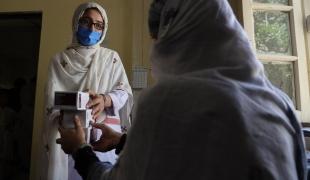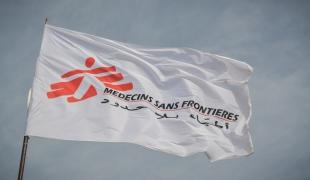Putting HIV Treatment to the Test : A Product Guide for Viral Load and Point-of-Care CD4 Diagnostic Tools
Communiqué de presse
This report is a guide for policymakers, treatment providers and advocates interested in learning more about laboratory-based and point-of-care viral load HIV diagnostic products, and point-of-care CD4 HIV diagnostic products.
The report includes:
- Information on how routine viral load (VL) monitoring improves HIV treatment outcomes
- Information on why the use of VL monitoring is particularly important for confirming treatment failure and for ensuring prevention of mother-to-child transmission of HIV (PMTCT)
- A decision guide for purchasers, and information on how to evaluate the use of point-of-care (POC) and lab-based technologies in different contexts
- Technical specifications and pricing information for 13 diagnostic tools:
• Three POC CD4 platforms
• Eight lab-based VL platforms
• One POC VL platform
• One POC VL platform for early infant diagnosis.
A second product guide, to be published in 2014, will include country-specific diagnostic prices for the same type of products, as well as an in-depth pricing analysis covering costs of platforms and general laboratory infrastructure, as well as routine costs including materials and human resources. The report will be coupled with a web-based platform that enables potential diagnostics purchasers
to estimate the overall costs for these tools, based upon their programme’s specific parameters.
MSF and HIV diagnostic and monitoring tools
With 285,000 people living with HIV on treatment in our programmes in 21 countries, MSF is exploring the best strategies for rolling out HIV diagnostic and monitoring tools in order to optimise treatment outcomes.
MSF is an early adopter of VL and POC CD4 testing in resource-poor settings, and is currently using, field testing or evaluating these technologies in 18 countries. With support from UNITAID, MSF is implementing a three-year project to evaluate various VL and CD4 testing technologies in eight projects across seven countries. The project will aim to establish the feasibility of routine VL testing in resource-limited settings, including assessing which existing and pipeline devices are suitable for specific resource-limited contexts, how they can have the greatest impact on treatment outcomes, and to what extent viral load testing can or should be decentralised.
MSF also plans to publish its findings from on-going implementation research on the diagnostic tools selected for its programmes.
MSF believes it is medically important and operationally feasible to implement VL monitoring in developing countries, and that cost should not remain a barrier to implementation. Cost savings from optimised treatment management and adaptation of VL protocols to
resource-limited settings can help mitigate higher upfront purchase costs; meanwhile, increased competition among diagnostic manufacturers is expected to reduce test prices further in the coming years.


